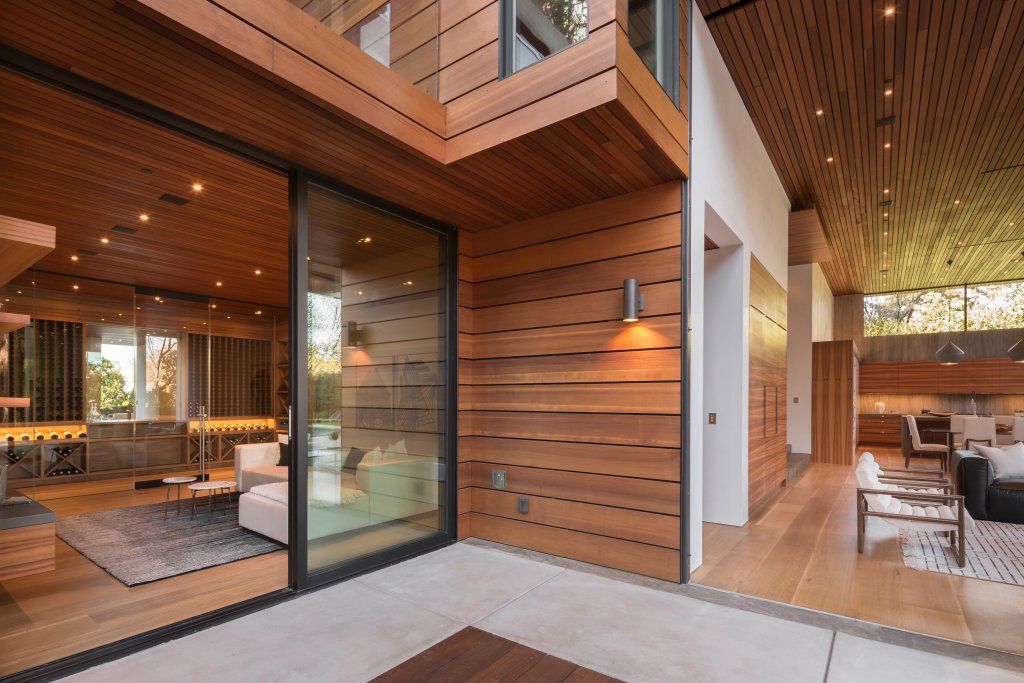Why the Ceiling Matters More Than You Think
When we think of interior design or architectural innovation, ceilings are often overlooked. Yet they play a vital role in defining a space’s style, acoustics, lighting integration, and insulation. Today, forward-thinking architects and designers are turning to Wood-Plastic Composite (WPC) materials as a smart, future-proof ceiling solution. Whether for luxury homes, bustling cafes, or moisture-prone areas like balconies or bathrooms, WPC ceilings combine beauty, durability, and sustainability like no other material.

In this blog, we’ll uncover how WPC materials are transforming ceiling designs across the globe—and why 2025 may be their breakout year.
WPC ceilings bring a wide palette of design options to both residential and commercial projects. Thanks to 3D wood grain embossing technology, WPC panels replicate the warm, authentic textures of natural woods—like teak, walnut, and oak—while eliminating imperfections such as knots and color inconsistency.
Want a sleek, modern touch? Options like carbon gray or white ash offer contemporary finishes that pair well with minimalist, industrial, or Scandinavian interiors.
These customizable visuals make WPC ceilings ideal for:
Boutique hotels
Upscale retail stores
Outdoor lounges
Artistic residential interiors
WPC's flexibility in design ensures a cohesive ceiling experience that can match any branding or stylistic vision.
Sustainability isn’t just a trend—it’s a necessity. Made from recycled wood fibers and high-density polymers, WPC ceiling panels significantly reduce the reliance on virgin timber, helping to preserve forests and natural ecosystems.
Unlike traditional MDF or plywood ceilings, WPC panels are produced without formaldehyde or harmful VOCs, making them a healthier option for indoor air quality. This is especially important in schools, hospitals, and residential homes.
💡 Did You Know?
Green-certified buildings using WPC materials are more likely to meet LEED certification requirements—a selling point for developers.
You can explore more on the environmental impact of durable wall coverings in our article here.
WPC ceilings are ideal for high-humidity environments. Their waterproof composition ensures panels won’t warp, rot, or mold—making them the perfect fit for:
Bathrooms
Balconies
Poolside ceilings
Outdoor pergolas
No need to worry about peeling paint or mildew—WPC keeps its integrity season after season.
WPC ceiling panels are engineered to endure temperatures ranging from -30°C to 80°C (-22°F to 176°F). Whether installed in:
Arid, sun-drenched areas (UV-resistant top layers prevent fading)
Coastal, salt-laden air (resistant to corrosion and termites)
Temperate regions with seasonal variation (excellent thermal stability)
They maintain shape and performance year-round.
One of the most compelling benefits? WPC ceilings require minimal upkeep. No staining, sealing, or repainting. A quick wipe with a damp cloth and mild detergent removes even stubborn stains like coffee, wine, or grease.
This results in substantial operational savings—especially for high-traffic businesses such as:
Restaurants
Cafes
Shopping malls
Exhibition centers
Want to learn how composites boost restaurant profitability? Read our insights here.
For homeowners seeking a stylish yet functional upgrade, WPC ceilings offer:
Living rooms with a warm wooden ambiance
Bedrooms with acoustic insulation
Bathrooms that resist humidity and steam
Balconies that maintain charm across seasons
WPC’s seamless installation and modern finishes enhance both comfort and appearance.
A growing number of architects are choosing WPC ceilings for:
They provide a harmonious blend of design and performance, with added noise insulation and fire resistance.
From pergolas to garden pavilions and sunrooms, WPC ceilings withstand nature’s elements without compromising beauty.
For airports, schools, libraries, and government buildings, WPC offers flame-retardant properties, durability, and easy maintenance—critical factors for public safety and longevity.
As environmental awareness grows, so does demand for eco-conscious construction. Developers and architects are specifying WPC ceilings to align with LEED certifications, energy-saving goals, and long-term durability requirements.
This aligns with the breakthroughs discussed in our article on WPC performance-enhancing additives here.
Modern WPC panels now incorporate co-extrusion technology, enhancing:
UV resistance
Scratch resistance
Stain resilience
This ensures surfaces maintain their integrity and appeal in both commercial and residential settings.
With advanced flame-retardant formulas, WPC ceilings are expanding their applications into previously restricted public or high-occupancy zones.
Next-gen surfaces feature self-cleaning nano-coatings, designed to repel dust, stains, and bacteria—ushering in an era of smart, hygienic ceilings.
The ceiling is no longer just an afterthought—it’s a strategic design element that influences aesthetics, safety, and environmental impact. WPC ceilings offer a unique combination of durability, low maintenance, eco-friendliness, and design freedom, making them one of the smartest investments in 2025 construction and renovation.
Whether you’re designing a family home, upgrading a boutique hotel, or planning a commercial space, wood-plastic composite ceiling panels provide powerful advantages that traditional materials simply can’t match.
praysunmaterials@gmail.com